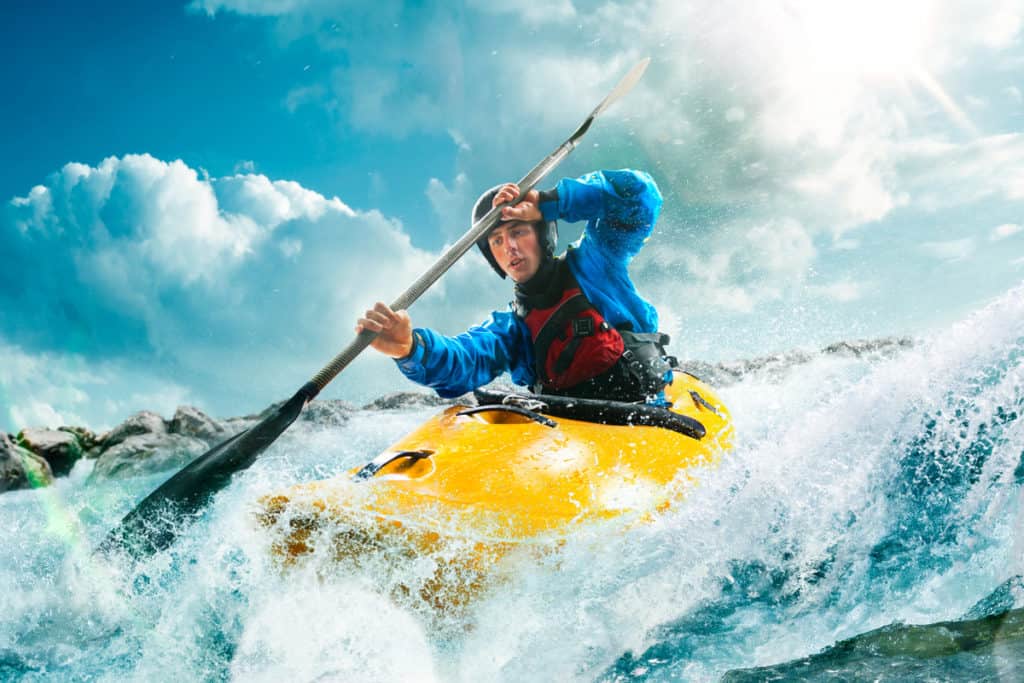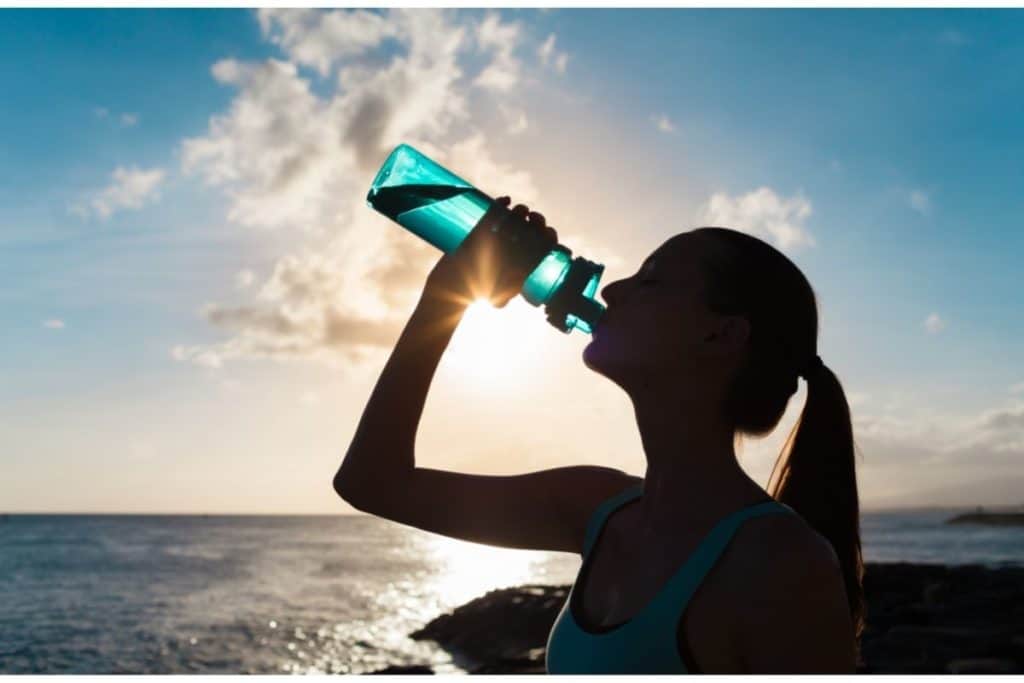As an Amazon Associate we earn from qualifying purchases.
Kayaking is one of the most fun and exciting sports in the world, and it’s a popular choice of activity even among people who don’t kayak a lot.
Whether you’re an avid kayaker or not, there is a lot of equipment to account for when kayaking, a lot of which is essential to your safety and comfort while kayaking.
As an extreme sport kayaking can put you in difficult situations and even calm water can often hide considerable dangers, and even then, there are a lot of things that can spoil your trip, especially if you’re poorly equipped for the excursion.

The key to getting the most out of your kayaking experience is preparation, as this will allow you to deal with any unexpected or unforeseen circumstances that crop up and threaten to derail your trip or spoil your fun.
In this guide we’re going to look at everything you need to bring kayaking, whether you’re an experienced kayaker or not, to ensure you have the best time possible and get the best experience that kayaking can offer.
Table of Contents
Kayak
The first and most important thing you’re obviously going to need when kayaking is… a kayak!
There are a lot of different styles of kayak available from small maneuverable options to faster more stable options, and all of them come in various sizes and configurations to suit almost any body of water or need.
If you’re an avid kayaking enthusiast who goes kayaking regularly, purchasing your own kayak can save you a lot of money and give you maximum control over your configuration.
However, for more casual kayakers, a rented kayak is a great way to get into the sport without spending a lot of money upfront.
Most kayaking centers offer package deals as well as various rates for longer overnight trips, so there are plenty of options available to you whether you’re a beginner or more experienced.
Flotation Device
The next most essential thing that all kayakers should use regardless of experience is a flotation device or life vest.
Anything can happen when kayaking, as it’s an extreme sport.
If you should hurt yourself or fall out of the kayak, and aren’t able to swim for whatever reason, the flotation device will save your life and allow others near you to attempt to assist you.
No one should ever think of kayaking without a flotation device, and if anyone does so they are putting themselves, as well as their fellow kayakers at serious risk of injury or even death.
Wetsuit
While a wetsuit may not always be necessary on very warm and calm water, it can make a huge difference and is also a great way to keep you warm should you enter the water.
Wetsuits can often be rented as a beginner, however many avid kayakers will own their own wetsuits which are the perfect fit and that have excellent features to support proper comfort and form while kayaking.
Paddle
No kayaker can go anywhere without a paddle so ensure you either bring one or rent one, and potentially consider bringing a spare also, particularly over longer distances or multi-day trips where losing a paddle can be disastrous.
Water

Kayaking is immensely challenging and puts a lot of strain on the body. While it may seem like there’s water all around you, bringing enough fresh drinking water to keep you hydrated for the duration of your trip is critical to staving off the debilitating effects of dehydration which can totally ruin your trip and be potentially life threatening.
Food
Bringing plenty of food is also important, as kayaking burns a lot of calories and is incredibly physically demanding.
Bringing a lot of food that is high in carbs can help keep your energy up while kayaking, but for longer trips, a more well-rounded food supply is required to keep your strength up over multiple days of intense kayaking.
A Map Or Route Plan
Always make sure to carry a plan of your route and that everyone has a copy of it to help prevent anyone from getting confused or lost. It’s also a good idea to leave this plan with someone at home so that if you should get lost rescuers will know where to look for you.
This is particularly important on longer trips, but for shorter trips, you can usually get away without these as long as you have a guide or someone who knows the area well.
Sun Screen
It’s very easy to get sunburnt on the water, as the water refracts and reflects sunlight back up at you from all directions, making you very prone to getting sunburnt while kayaking.
This can make your experience hugely uncomfortable, so it’s very important to bring sunscreen and stay on top of using it to prevent sunburn totally ruining your trip.
Helmet
Another crucial piece of kit for kayaking is a good helmet, which will help keep you safe should your kayak tip over, or overhanging branches threaten to hit you in the head from above.
You can easily rent a helmet along with your other equipment, however if you’re an avid kayaker you may be better off finding your own helmet that fits better and is a little lighter, as well as more comfortable.
Sandals Or Wet Shoes
Last but not least, good footwear is key for kayaking. Avoid flip flops where possible, and if possible use sandals that strap to your feet, or in cold weather kayaking wet shoes to help keep your feet warmer and protected.
Amazon and the Amazon logo are trademarks of Amazon.com, Inc, or its affiliates.
